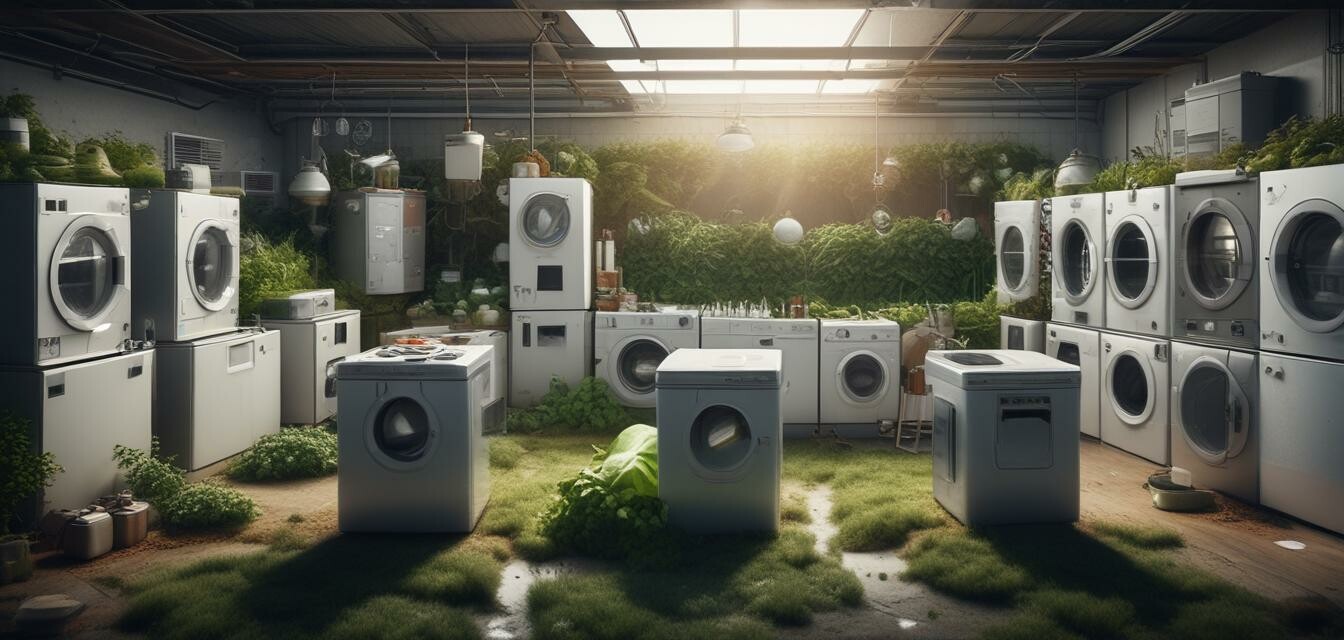
Understanding the Circular Economy in Appliances
- The circular economy minimizes waste through the design and lifecycle of appliances.
- Energy-efficient appliances play a crucial role in reducing environmental impact.
- Companies are innovating to create sustainable products that are easy to repair and recycle.
- Consumer choices significantly influence the transition to a circular economy.
The concept of a circular economy is transforming how we think about consumption and sustainability, particularly in the appliance sector. This article explores how appliances contribute to a circular economy and the vital role energy efficiency plays in this movement.
What is a circular economy?
A circular economy is an alternative to the traditional linear economy that follows a "take, make, dispose" model. Instead, the circular economy focuses on continual use of resources, aiming to keep products, materials, and waste in circulation.
Key elements of a circular economy
- Design for longevity
- Easy maintenance and repair
- Recycling and upcycling of materials
- Innovation in energy efficiency
The role of appliances in the circular economy
Appliances are a significant part of our daily lives, and their design and functionality are crucial to the implementation of a circular economy. Here's how they contribute:
1. Sustainability in Design
Modern appliances are increasingly being designed with sustainability in mind. Manufacturers are focusing on:
- Using sustainable materials that are easier to recycle.
- Innovating products that last longer and require less energy.
2. Energy Efficiency
Energy-efficient appliances consume less electricity during operation and can significantly reduce a household’s carbon footprint. This transition is fostered by:
- Improved technologies that allow for greater efficiency.
- Government regulations and standards promoting energy-efficient products.
For more information on energy-saving appliances, visit our Buying Guides section.
3. Repair and Maintenance Options
Appliance manufacturers are beginning to realize that ease of repair can drive customer loyalty. Features that facilitate repairs include:
- Replaceable parts that extend the life of appliances.
- Designs that make it easier to access internal components.
4. Recycling Programs
Many companies are implementing take-back programs or partnerships with recycling facilities to ensure appliances are disposed of responsibly at the end of their life. This can lead to:
- The recovery of valuable materials.
- Reducing landfill waste.
Benefits of Energy Efficiency in Appliances
Investing in energy-efficient appliances not only benefits the environment but also affects consumers financially. Here are some advantages:
| Benefit | Description |
|---|---|
| Cost Savings | Lower energy bills due to reduced electricity consumption. |
| Reduced Carbon Footprint | Minimized greenhouse gas emissions associated with energy production. |
| Government Incentives | Potential rebates or tax credits for purchasing energy-efficient models. |
The Future of Appliances in a Circular Economy
The transition toward a circular economy in appliances presents exciting opportunities. Manufacturers are increasingly focused on:
- Innovations in technology that facilitate sustainability.
- Collaboration with governmental bodies to promote eco-friendly practices.
- Consumer education on the importance of sustainability.
Pros
- Increased awareness of sustainability.
- Long-term cost savings for consumers.
- Support for local recycling initiatives.
Cons
- Initial higher investment in energy-efficient models.
- Limited options in certain appliance categories.
Conclusion
The integration of appliances into the circular economy is essential for creating a sustainable future. By choosing energy-efficient options and supporting sustainable practices, consumers can make a significant impact. For more details on energy-efficient appliances, check out our Air Conditioners page or our Tips and How-to Articles section.
